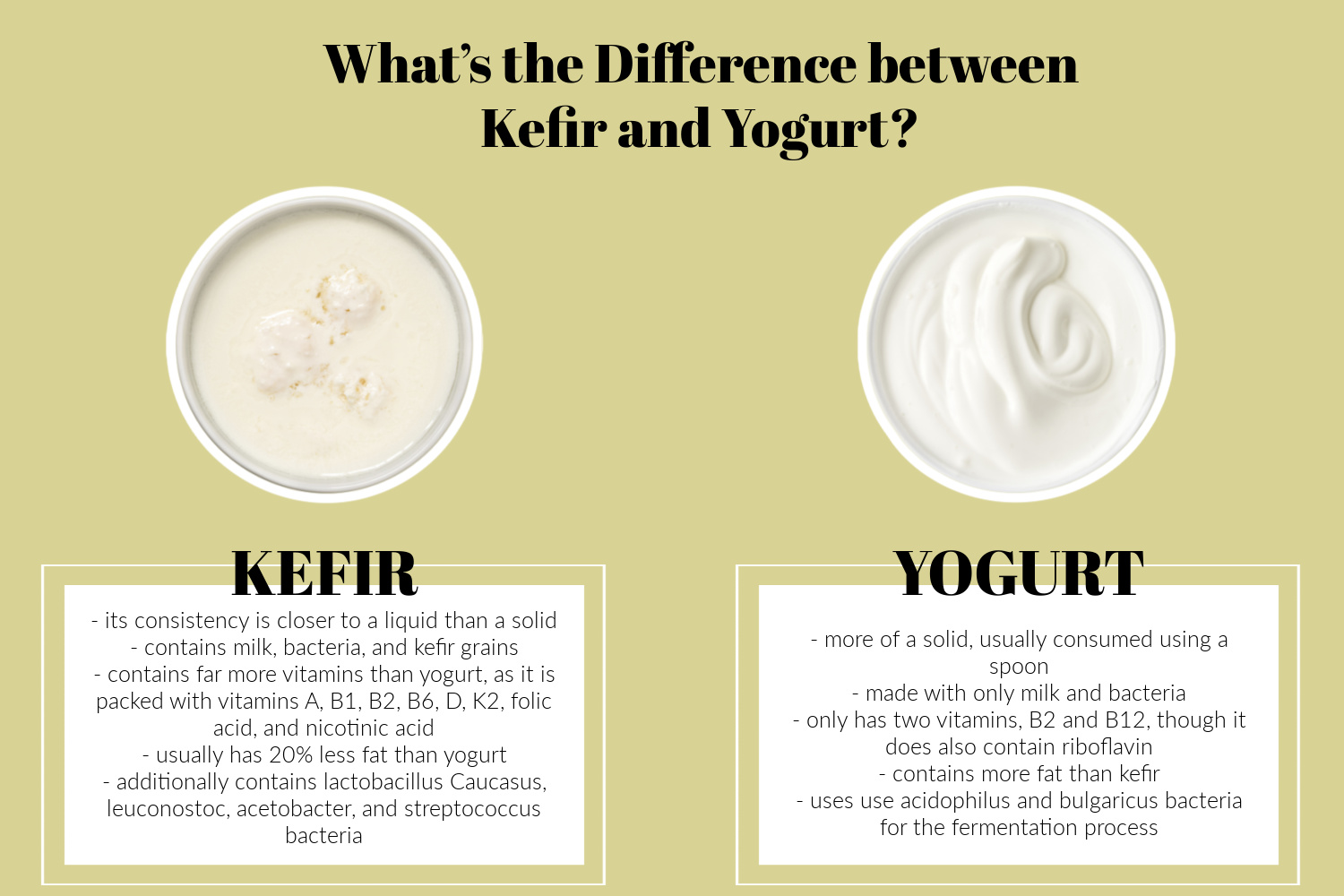Kefir and yogurt are similar dairy products that are rich in probiotics and offer benefits for digestion and gut health, but there are some key differences. The distinct fermentation methods both kefir and yogurt undergo contributes to differing taste, texture, and nutritional profiles. Being able to distinguish between these two diary products enables individuals to make informed dietary choices based on their preferences and health goals.

7 Differences Between Kefir and Yogurt
1. Texture
Texture is one way kefir and yogurt differ. Kefir is thinner, making it best served as a beverage as its consistency is closer to a liquid than a solid. Yogurt is more of a solid, usually consumed using a spoon.
2. Ingredients
The ingredients which make up kefir and yogurt are different. Yogurt is made with only milk and bacteria. Kefir, on the other hand, contains milk, bacteria, and kefir grains.
3. Nutritional Value
There is a difference in the nutritional value of kefir and yogurt. Kefir contains far more vitamins than yogurt, as it is packed with vitamins A, B1, B2, B6, D, K2, folic acid, and nicotinic acid. Yogurt, however, only has two vitamins, B2 and B12, though it does also contain riboflavin, which kefir doesn’t.
4. Calorie Content
The calorie contents of yogurt and kefir are similar, though yogurt tends to be slightly higher. A one-cup serving, for example, is 110 calories when consuming kefir, and 130 calories when consuming yogurt.
5. Fat Content
Yogurt contains more fat than kefir, but kefir isn’t fat-free. While the exact fat content can vary from brand to brand, kefir usually has 20% less fat than yogurt.
6. Bacteria Used to Ferment
The bacteria used to ferment kefir and yogurt is another distinction between the two. Both yogurt and kefir use acidophilus and bulgaricus bacteria for the fermentation process. Kefir, though, additionally contains lactobacillus Caucasus, leuconostoc, acetobacter, and streptococcus bacteria. The additional bacteria content makes kefir a better probiotic than yogurt.
7. Incubation Type
The incubation type differs between kefir and yogurt in temperature and time period. Kefir is produced using a room-temperature incubation process for a long duration, while yogurt is made using a higher temperature for a shorter amount of time.
Can Yogurt and Kefir Be Used Interchangeably?
Yogurt and kefir have a similar taste and can both be used in recipes; however, they can’t always be exchanged for one another. Because of its runny texture, kefir can make a recipe calling for yogurt too thin, and swapping kefir for yogurt in a recipe can make the recipe too thick.
Therefore, it is not recommended to swap kefir for yogurt within recipes, but those looking to change up their breakfast routine can try a smoothie made with yogurt or kefir without having to worry about changing the taste.
Leave a Reply